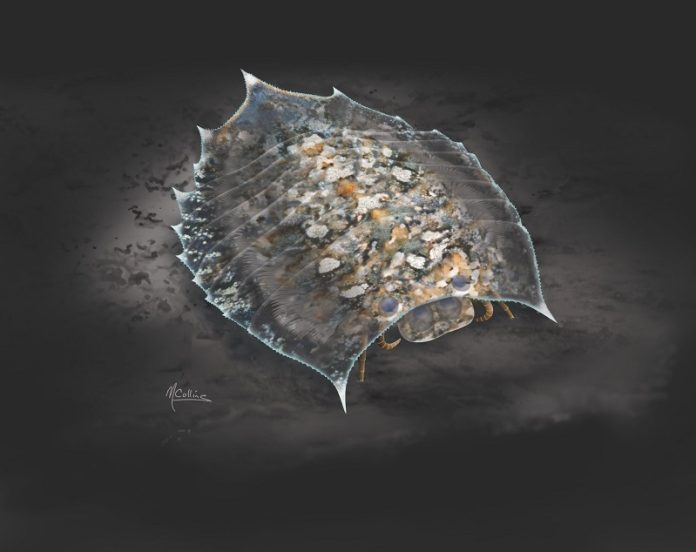
For over a century, scientists have been puzzled by a mysterious fossil called Helmetia expansa, an ancient arthropod from the Cambrian Period.
First discovered in 1918 by paleontologist Charles Doolittle Walcott, the fossil was originally thought to be a crustacean.
However, it had never been officially described, and only one specimen had ever been illustrated—until now.
In a new study published in the Journal of Systematic Palaeontology, Harvard researchers led by Dr. Sarah Losso finally offer a full description of Helmetia expansa.
This ancient creature lived around 508 million years ago and belonged to a rare group of soft-bodied arthropods known as concilitergans—relatives of trilobites.
Unlike trilobites, concilitergans didn’t have hard, calcified shells, so they only fossilized under special conditions, like those found in the Burgess Shale in Canada.
This site is famous for preserving even soft parts of animals, such as gills, legs, and guts.
Dr. Losso and her team studied 36 fossil specimens stored at the Smithsonian Institution and the Royal Ontario Museum.
They used photography, special lighting, and comparisons with similar fossils from China and Greenland to understand the full shape and structure of Helmetia.
They found that the creature had a leaf-like body and, in some fossils, visible eyes, digestive organs, and limbs.
Earlier scientists believed it only had gills and no legs, which led them to think it swam through the water. But this new study revealed that Helmetia also had walking legs, meaning it likely crawled along the seafloor like trilobites.
Even more fascinating, the researchers found two specimens in the middle of molting—a process where arthropods shed their exoskeleton to grow. This is the first time molting has been seen in concilitergans. The fossils showed the new exoskeleton pushing out from the front of the body, similar to how horseshoe crabs molt today.
The team also discovered that adult Helmetia varied in size. Some were only 92 millimeters long, while others grew to more than 180 millimeters. These findings provide clues about how the species developed as it grew older.
Using all this new information, the researchers confirmed that Helmetia belongs to a group called Helmediidae, which features species with clear body segments and side spines. They also updated the evolutionary tree of concilitergans, helping scientists better understand how these early arthropods are related.
“This study gives us a much clearer picture of what Helmetia looked like, how it moved, and where it fits in the evolutionary story of arthropods,” said Dr. Losso. “It helps solve a mystery that’s lasted more than 100 years.”
Source: Harvard University.



